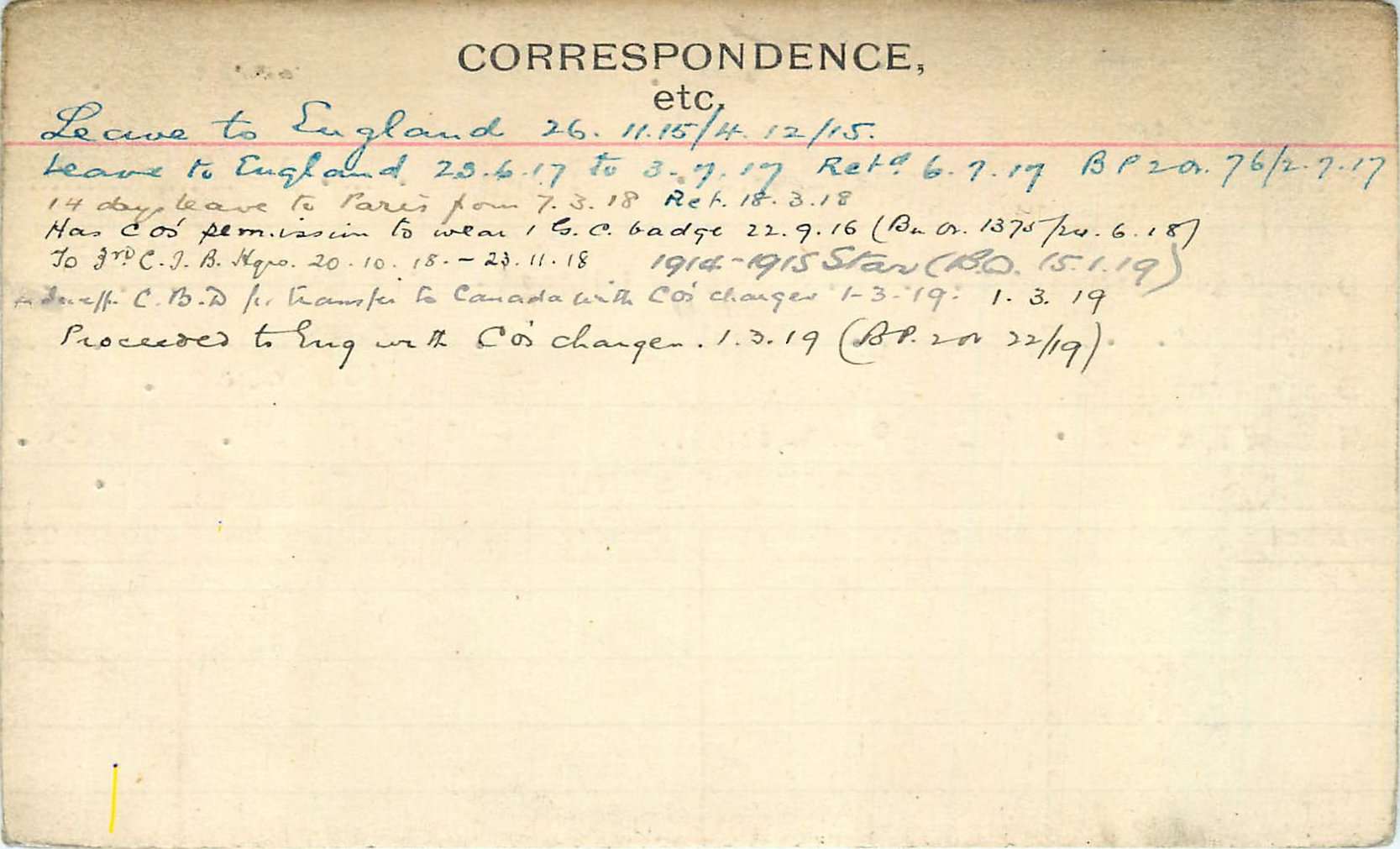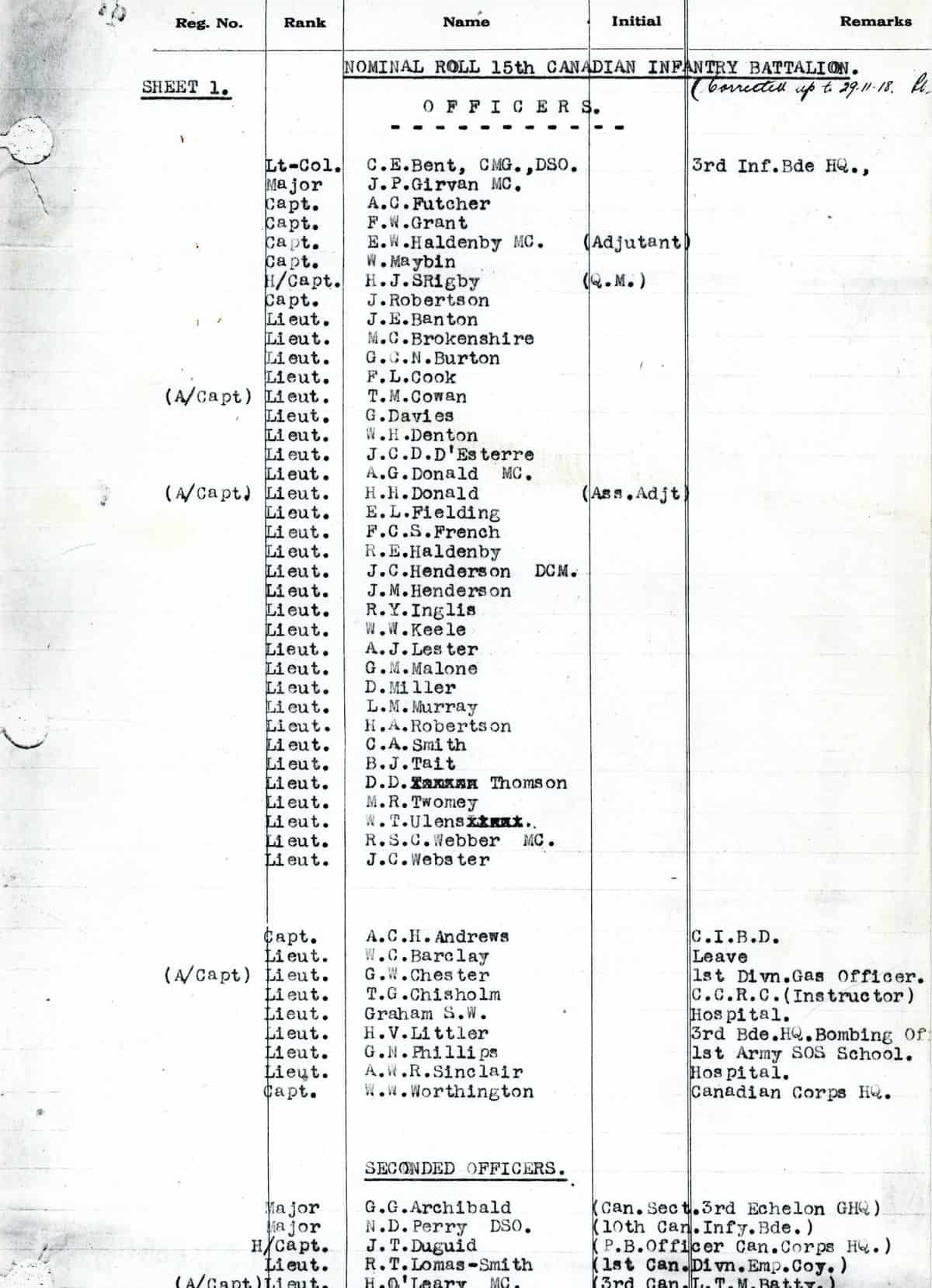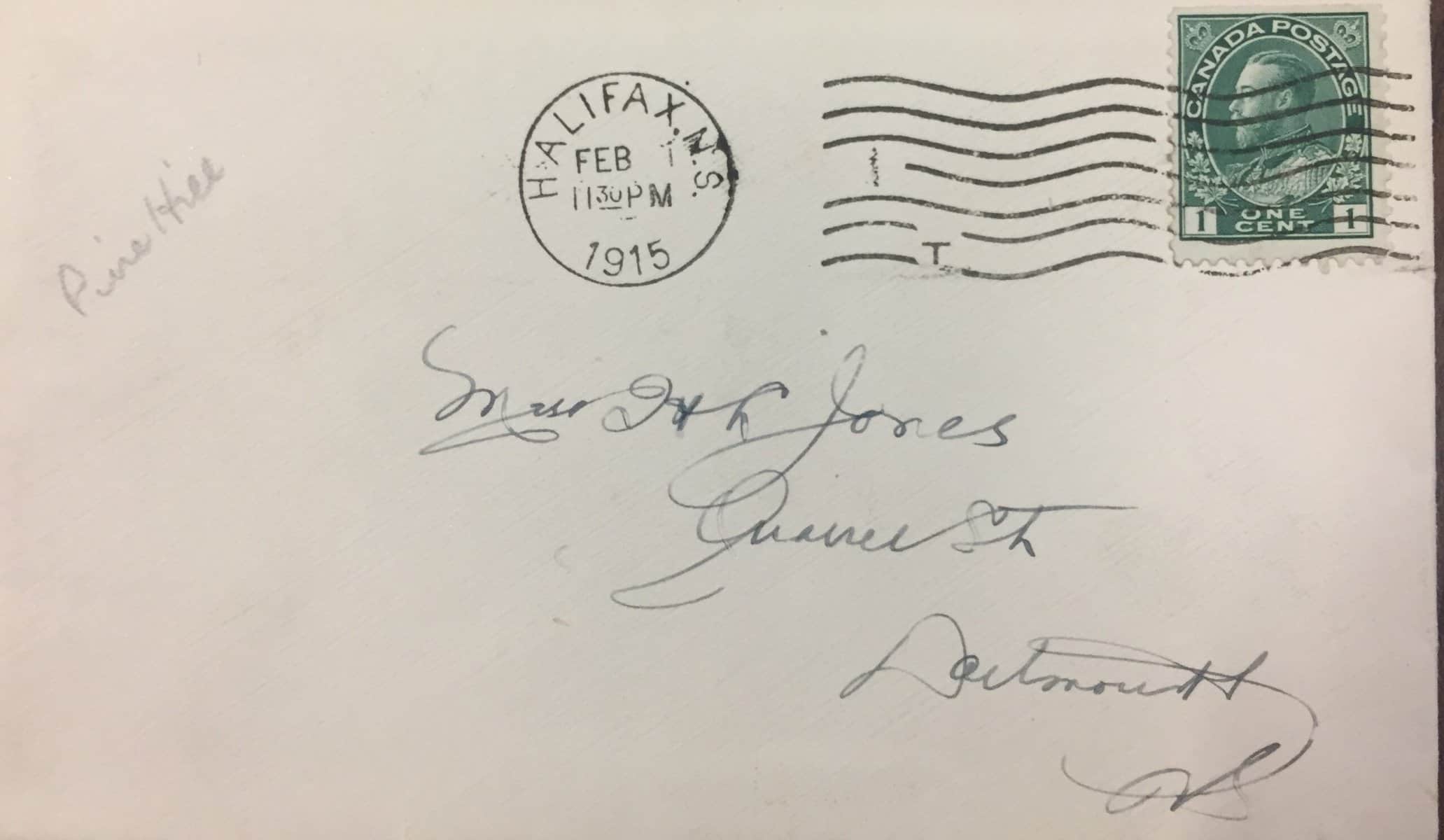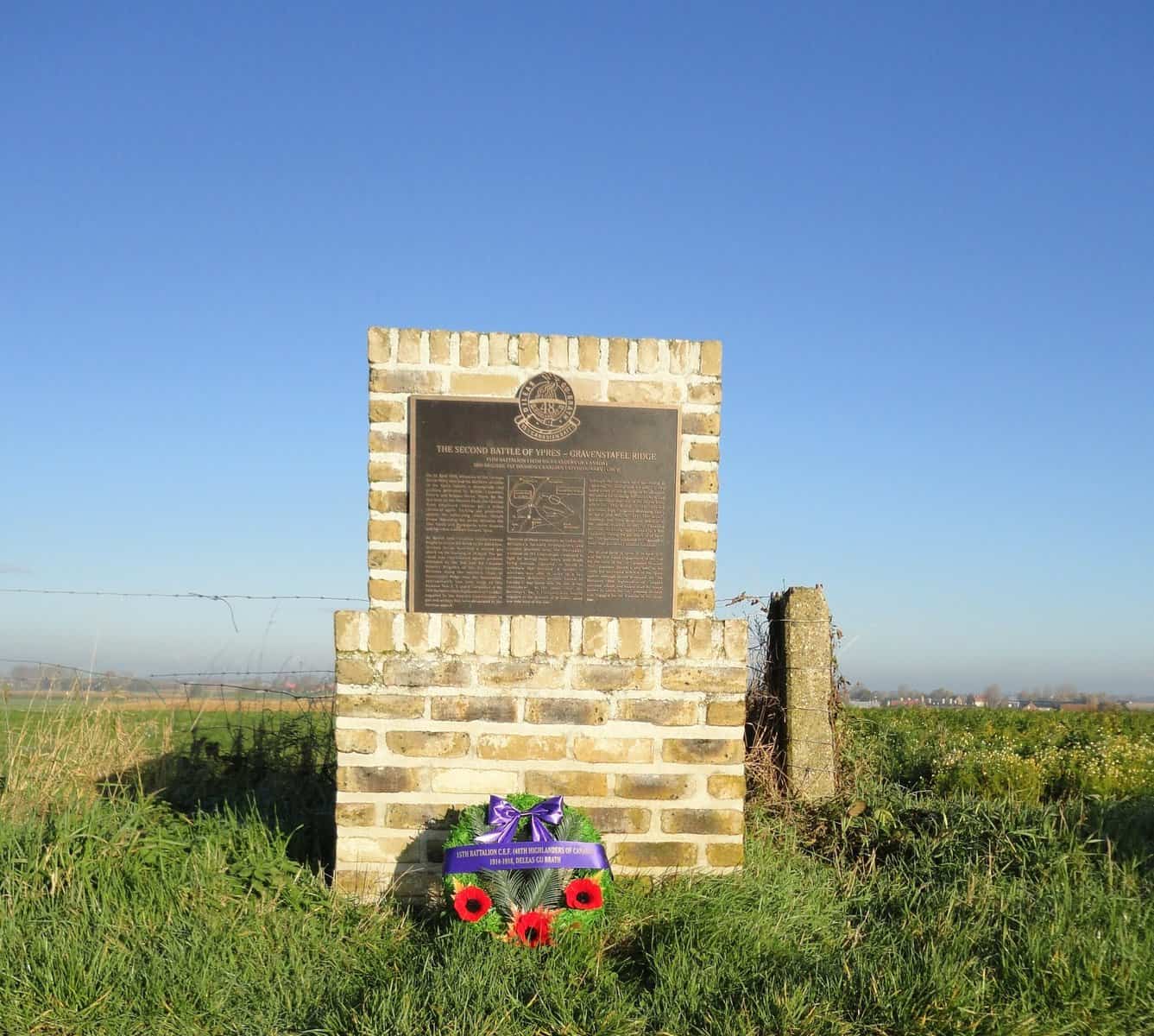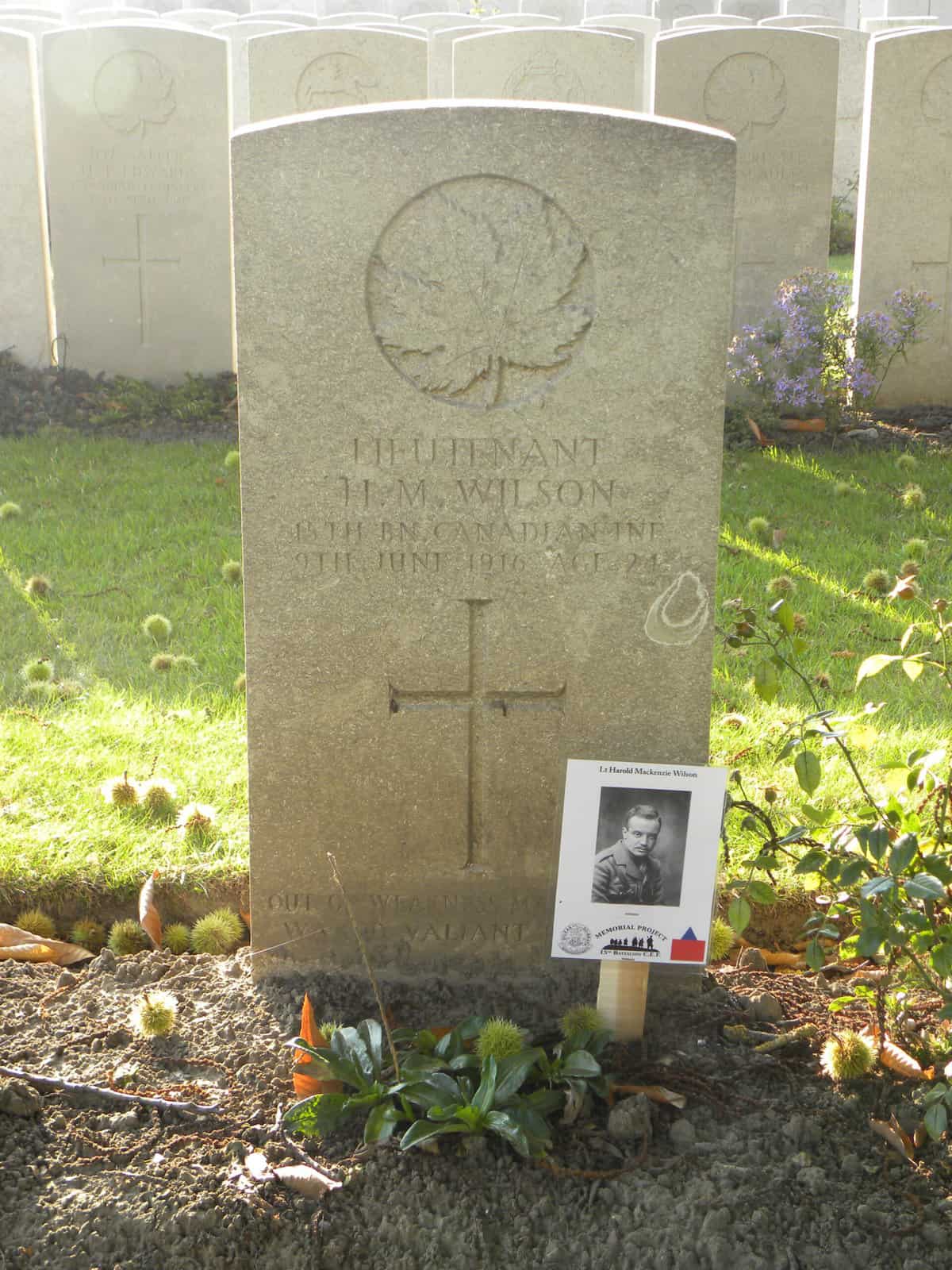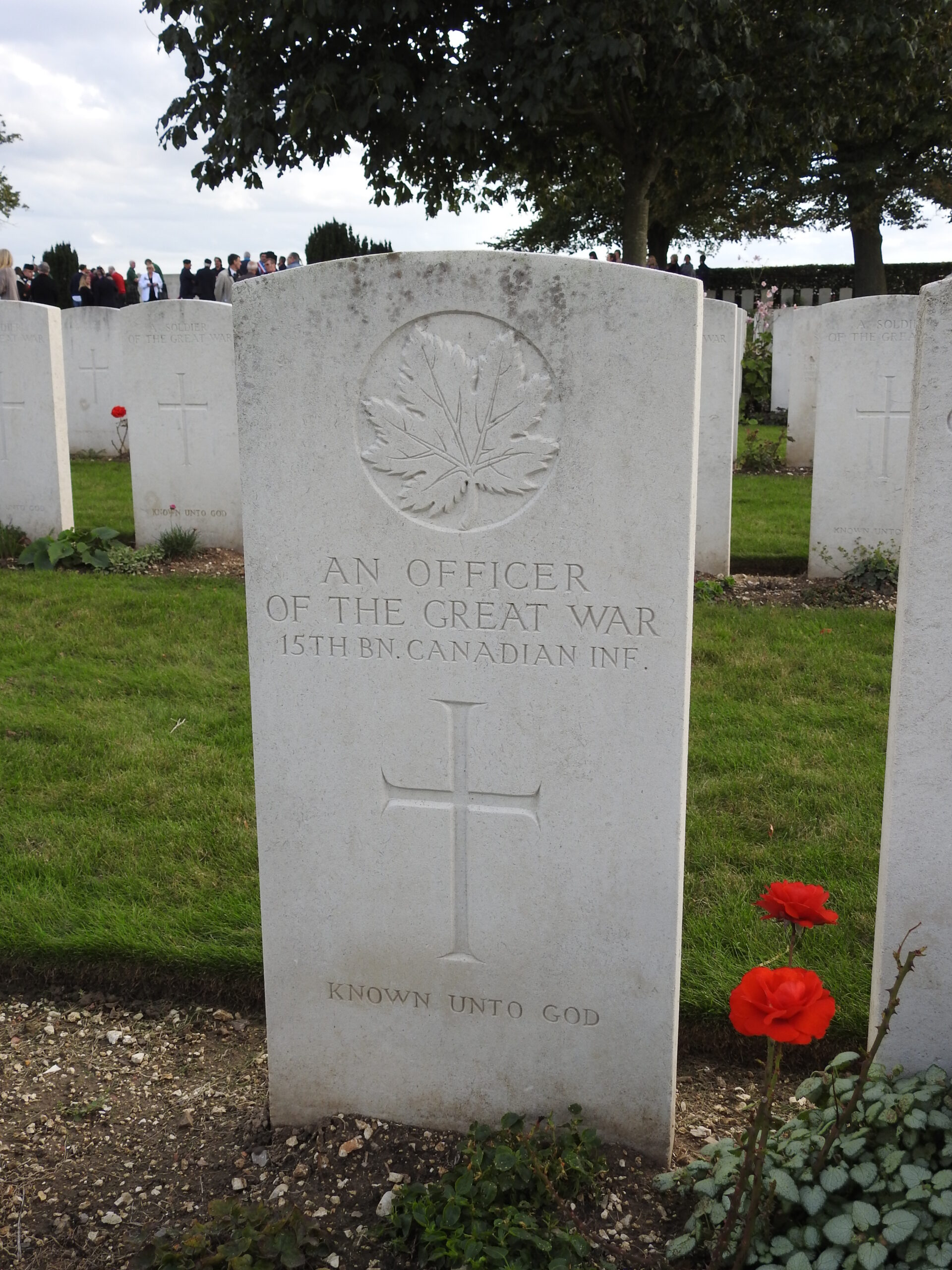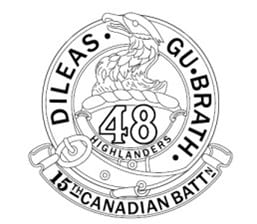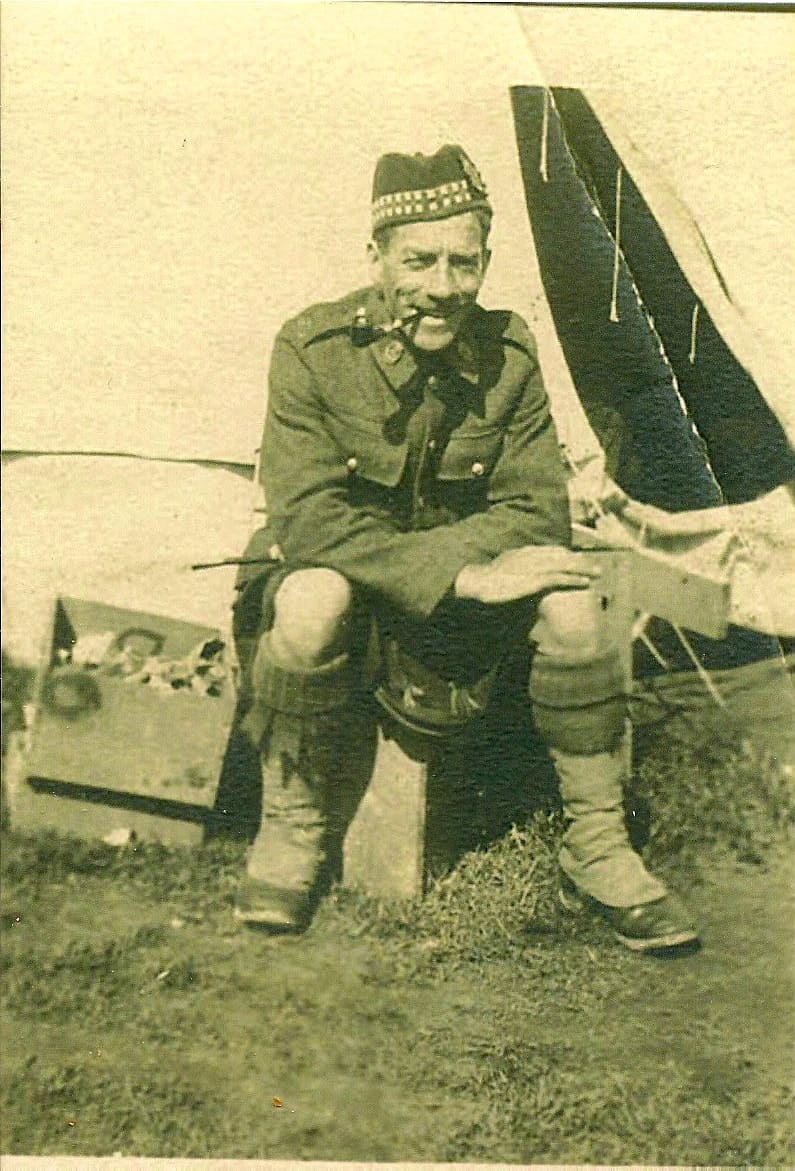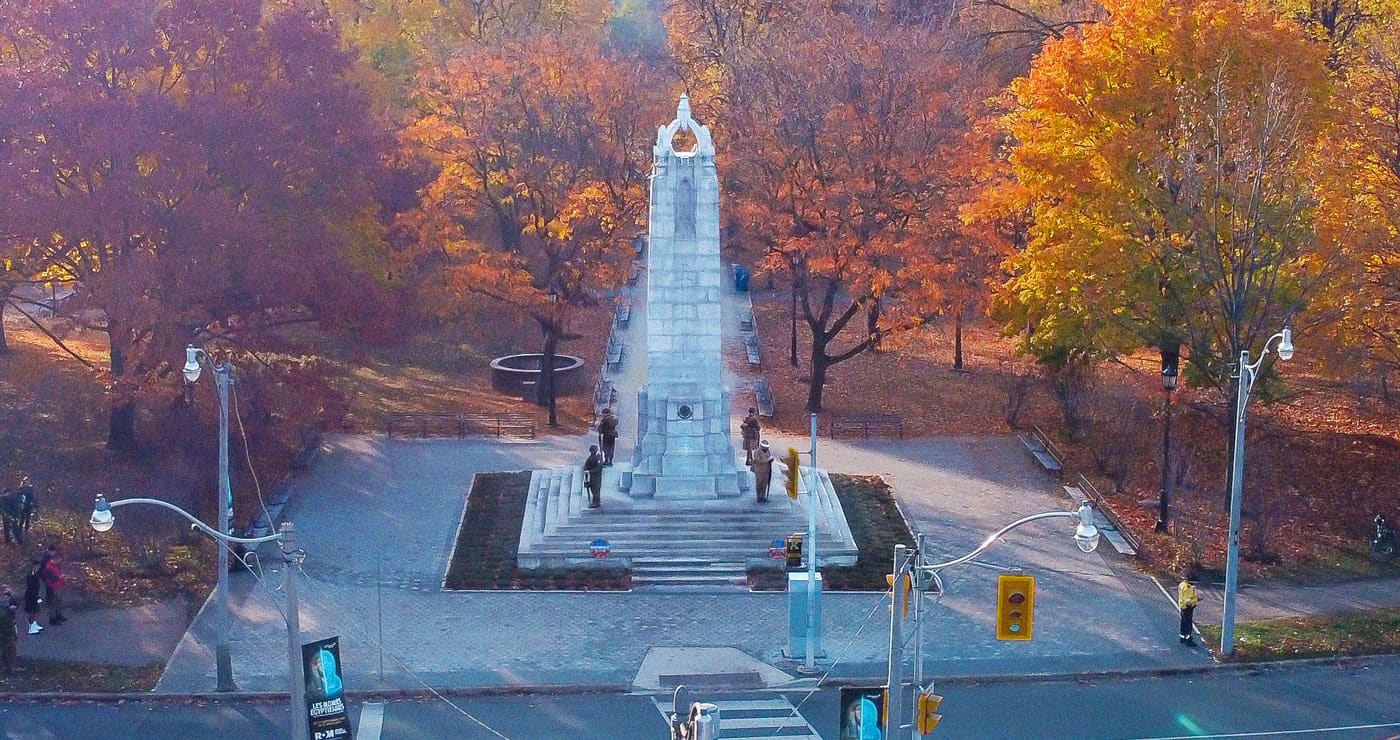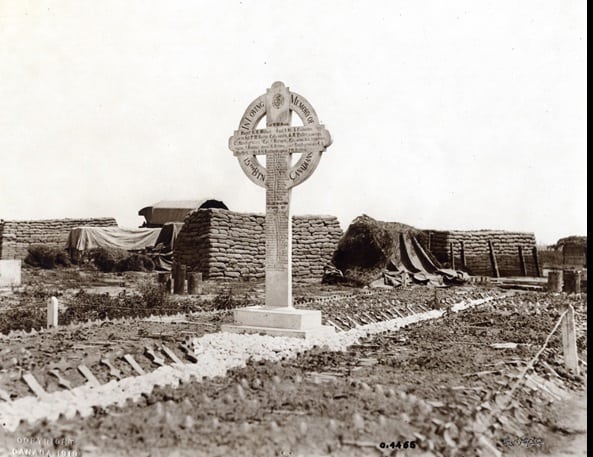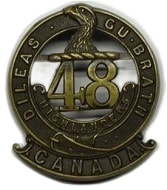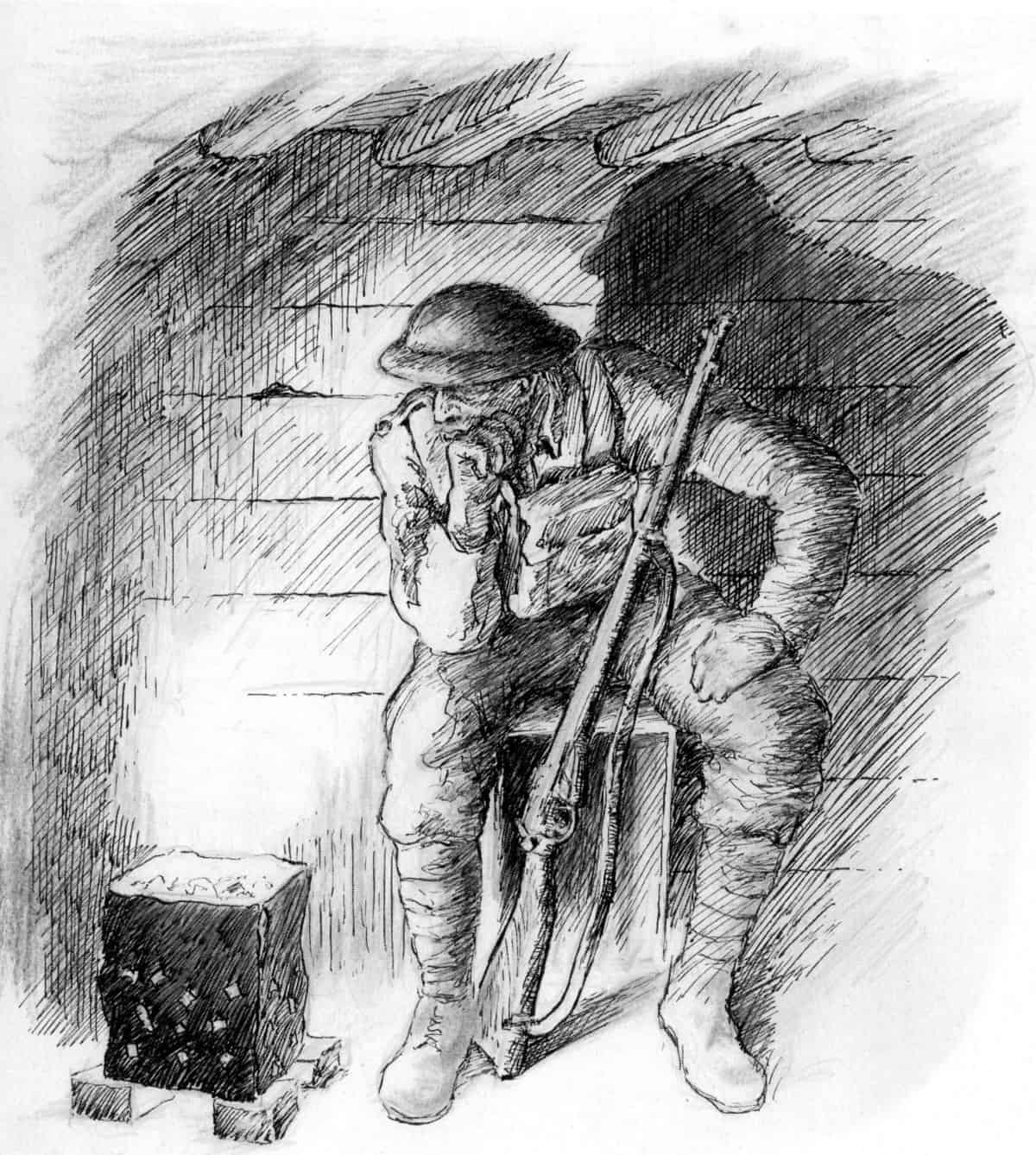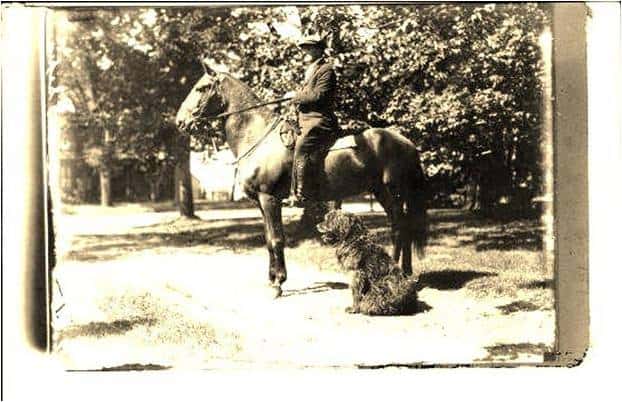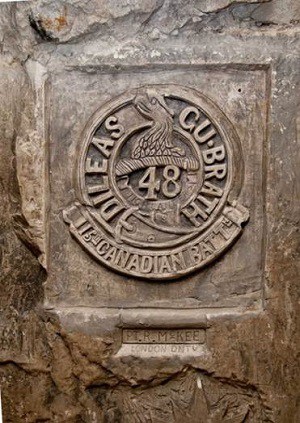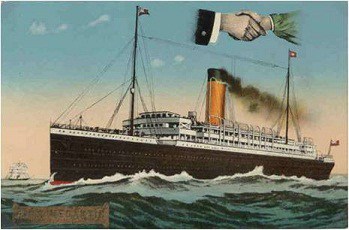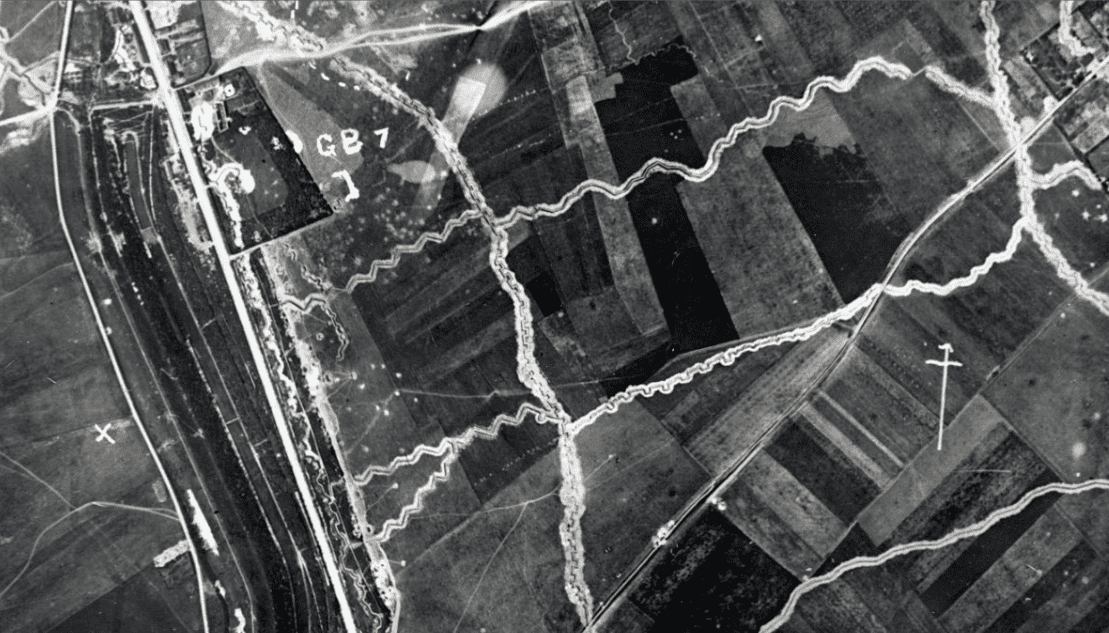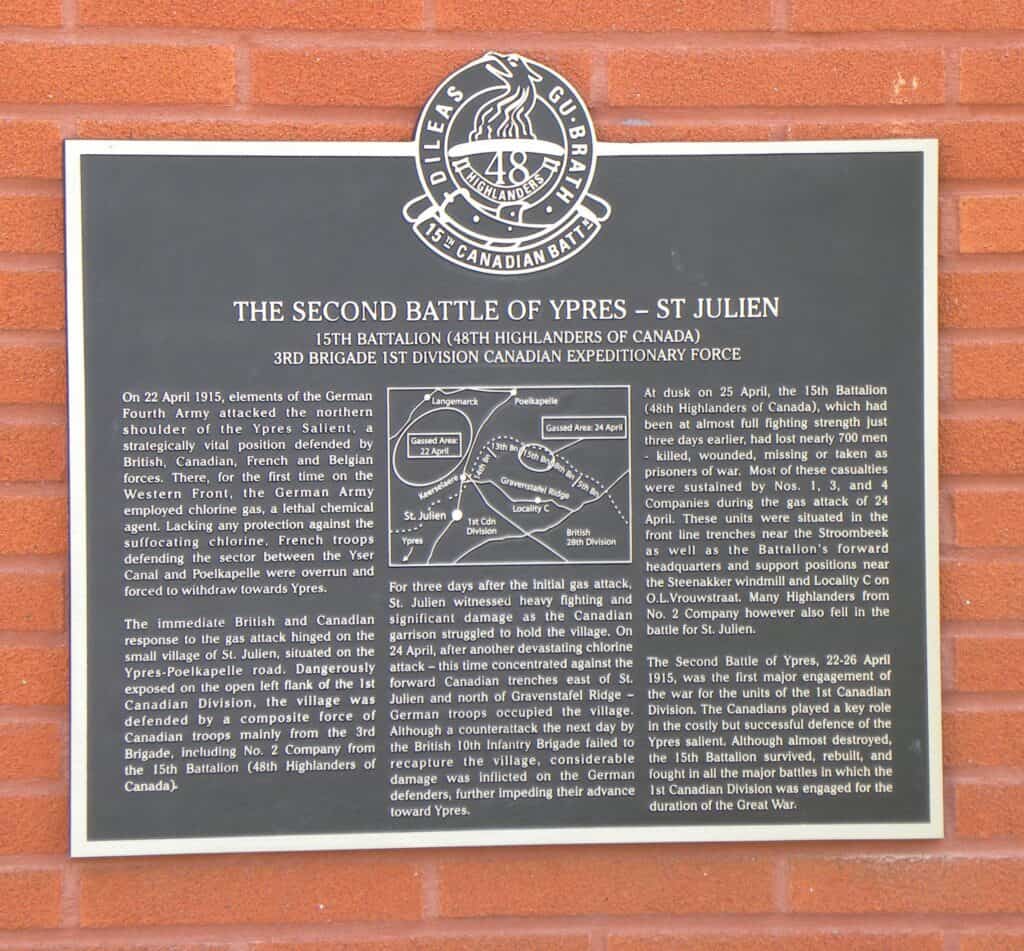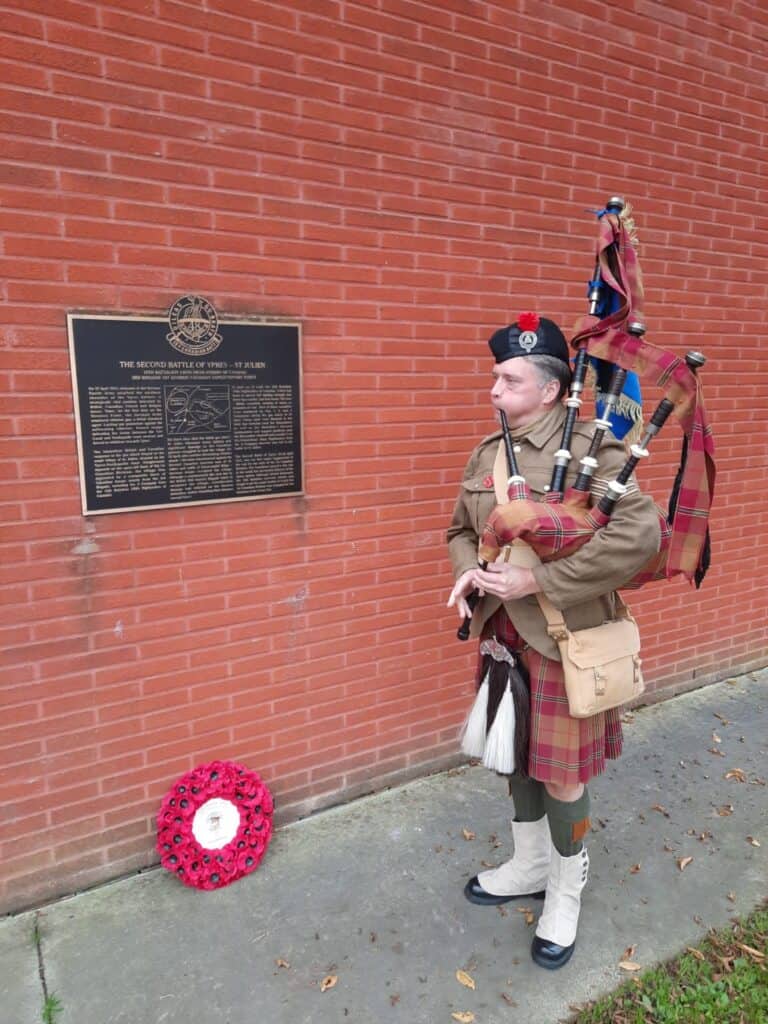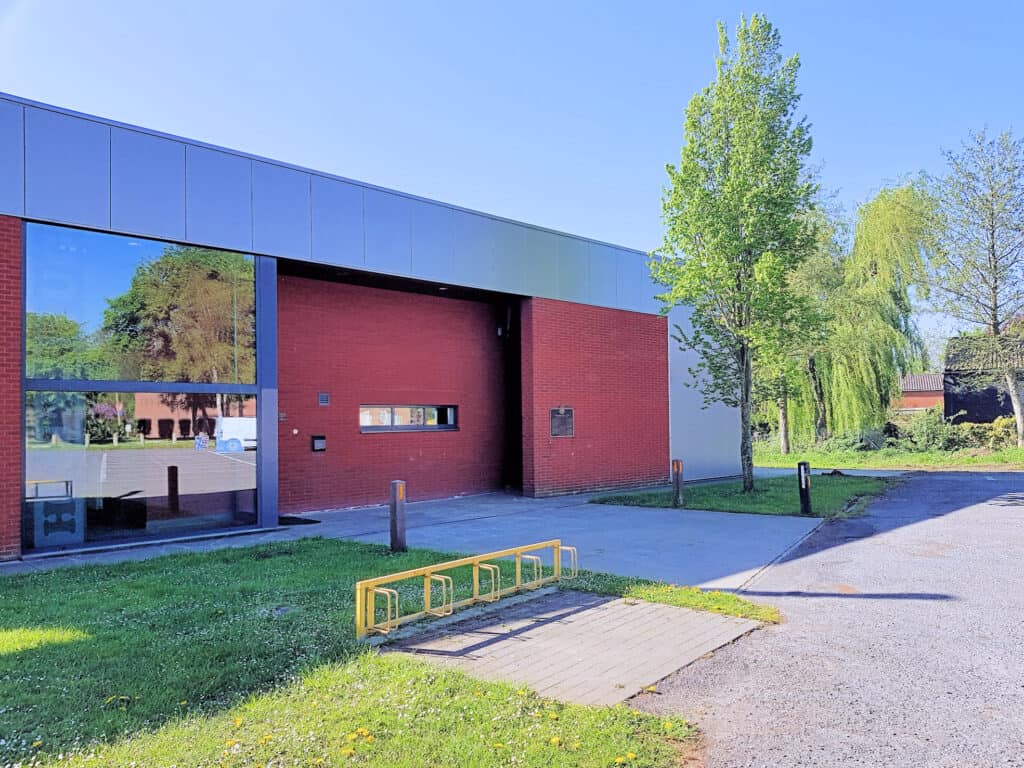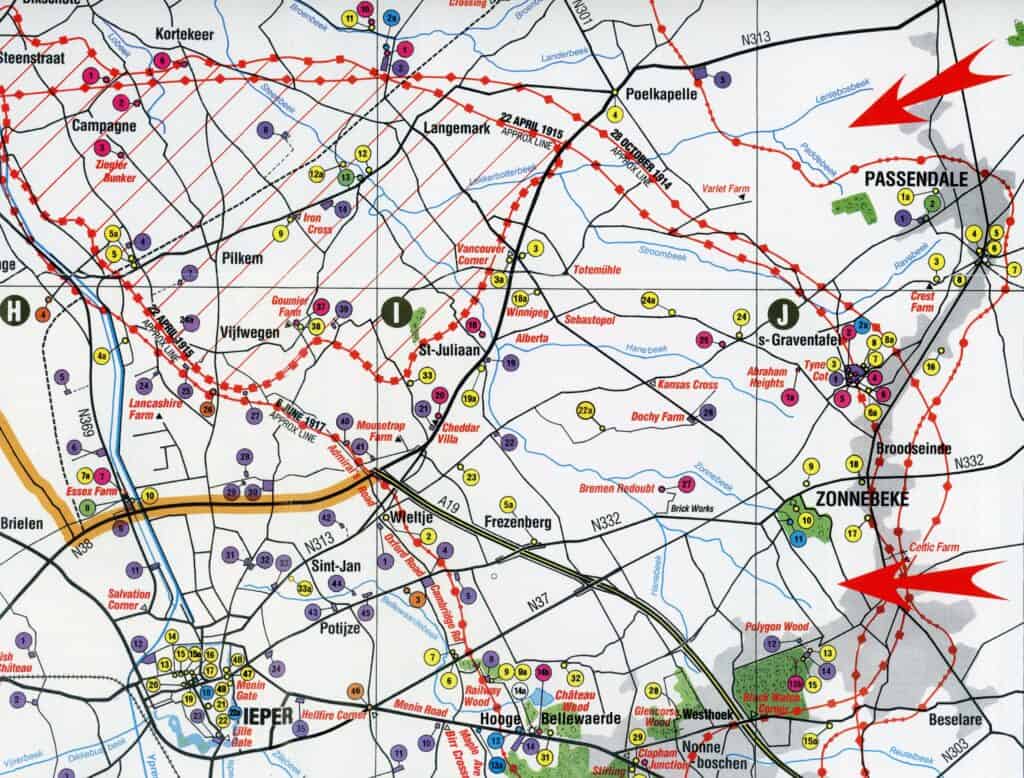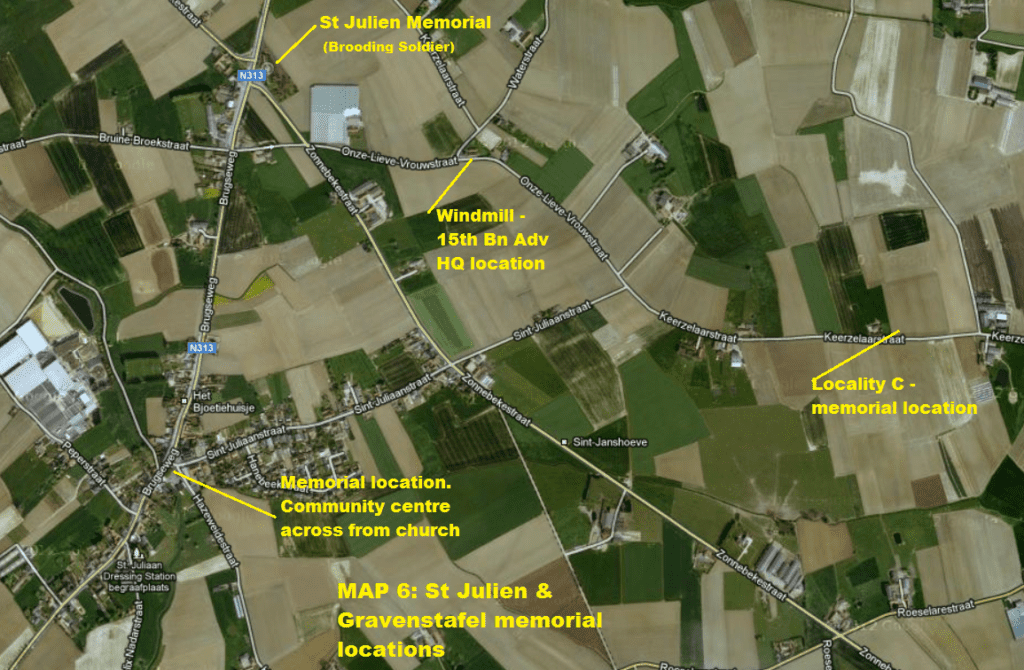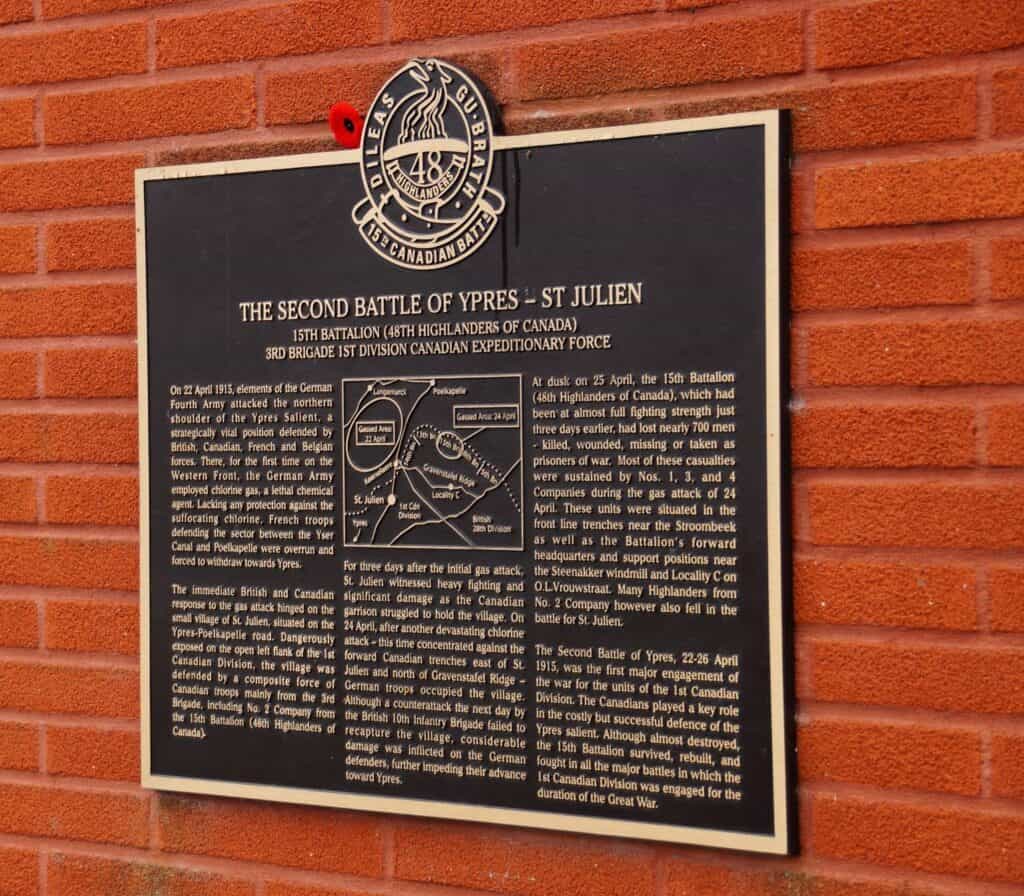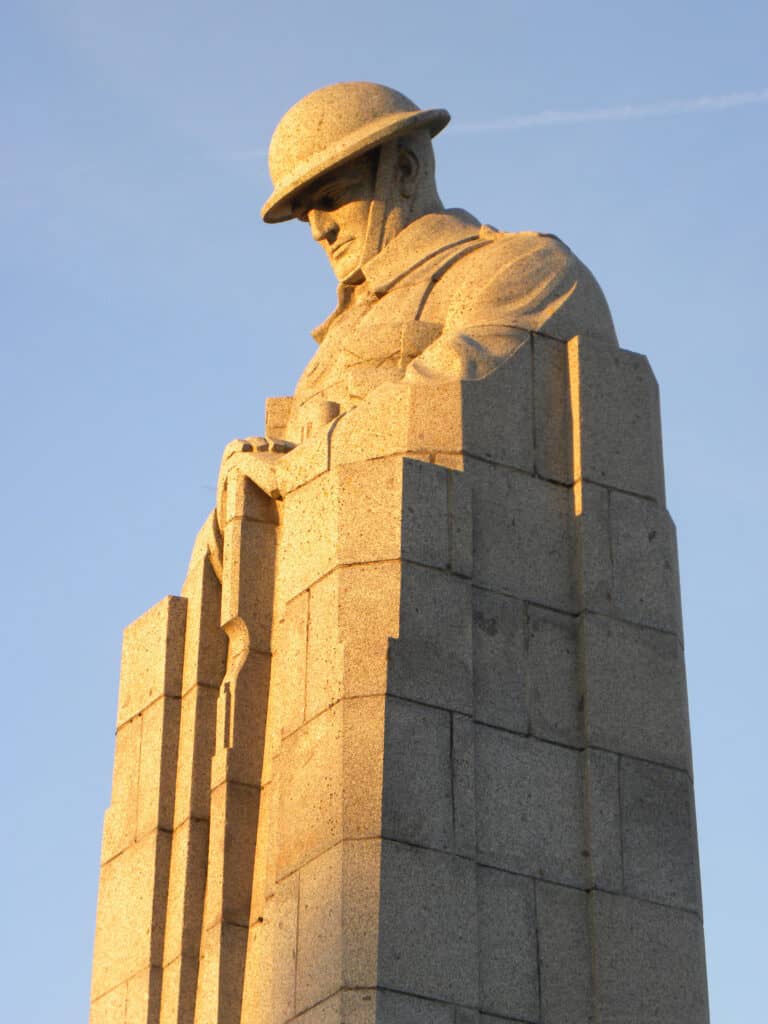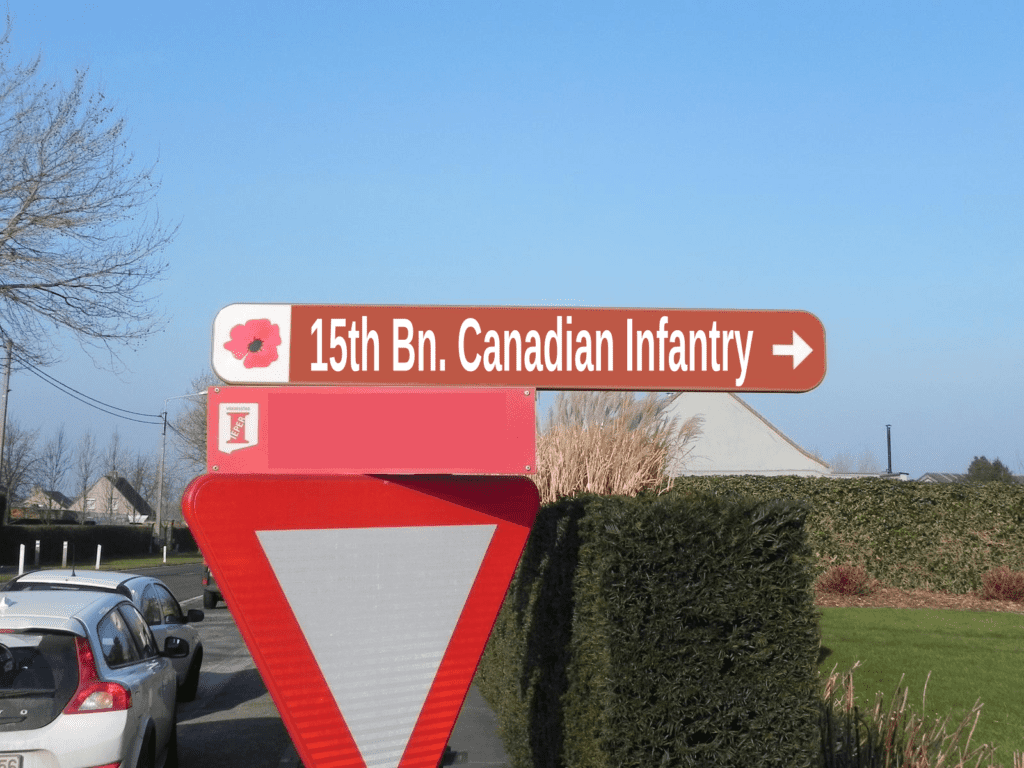On 22 April 1915, elements of the German Fourth Army attacked the northern shoulder of the Ypres salient, a strategically vital position defended by British, Canadian, French and Belgian forces. There, for the first time on the Western Front, the German Army employed chlorine gas, a lethal chemical agent. Lacking any protection against the suffocating chlorine, French troops defending the sector between the Yser canal and Poelkapelle were overrun and forced to withdraw towards Ypres.
The immediate British and Canadian response to the gas attack hinged on the small village of St. Julien situated on the Ypres-Poelkapelle road. Dangerously exposed on the open left flank of the 1st Canadian Division, the village was defended by a composite force of Canadian troops mainly from the 3rd Brigade, including No. 2 Company from the 15th Battalion (48th Highlanders).
For three days after the initial gas attack, St. Julien witnessed heavy fighting and significant damage as the Canadian garrison struggled to hold the village. On 24 April, after another devastating chlorine attack – this time against the forward Canadian trenches east of St Julien and north of Gravenstafel ridge – German troops occupied the village. Although a counterattack the next day by the British 10th Infantry Brigade failed to recapture the village, considerable damage was inflicted on the German defenders, further impeding their advance towards Ypres.
At dusk on 25 April, the 15th Battalion (48th Highlanders), which had been at almost full fighting strength just three days earlier, had lost nearly 700 men – killed, wounded, missing or taken prisoners of war. Most of these casualties were sustained by Nos. 1, 3 and 4 Companies during the gas attack of 24 April. These units were situated in the front-line trenches near the Stroombeek as well as the Battalion’s forward headquarters and support positions near the Steenakker windmill and Locality C on V.L. Vrouwstraat. Many Highlanders from No. 2 Company however also fell in the battle for St. Julien.
The Second Battle of Ypres, 22-26 April 1915, was the first major engagement of the war for units of the 1st Canadian Division. The Canadians played a key role in the costly but successful defence of the Ypres salient. Although almost destroyed, the 15th Battalion (48th Highlanders) survived, rebuilt and fought in all the major battles in which the 1st Canadian Division was engaged for the duration of the war.


